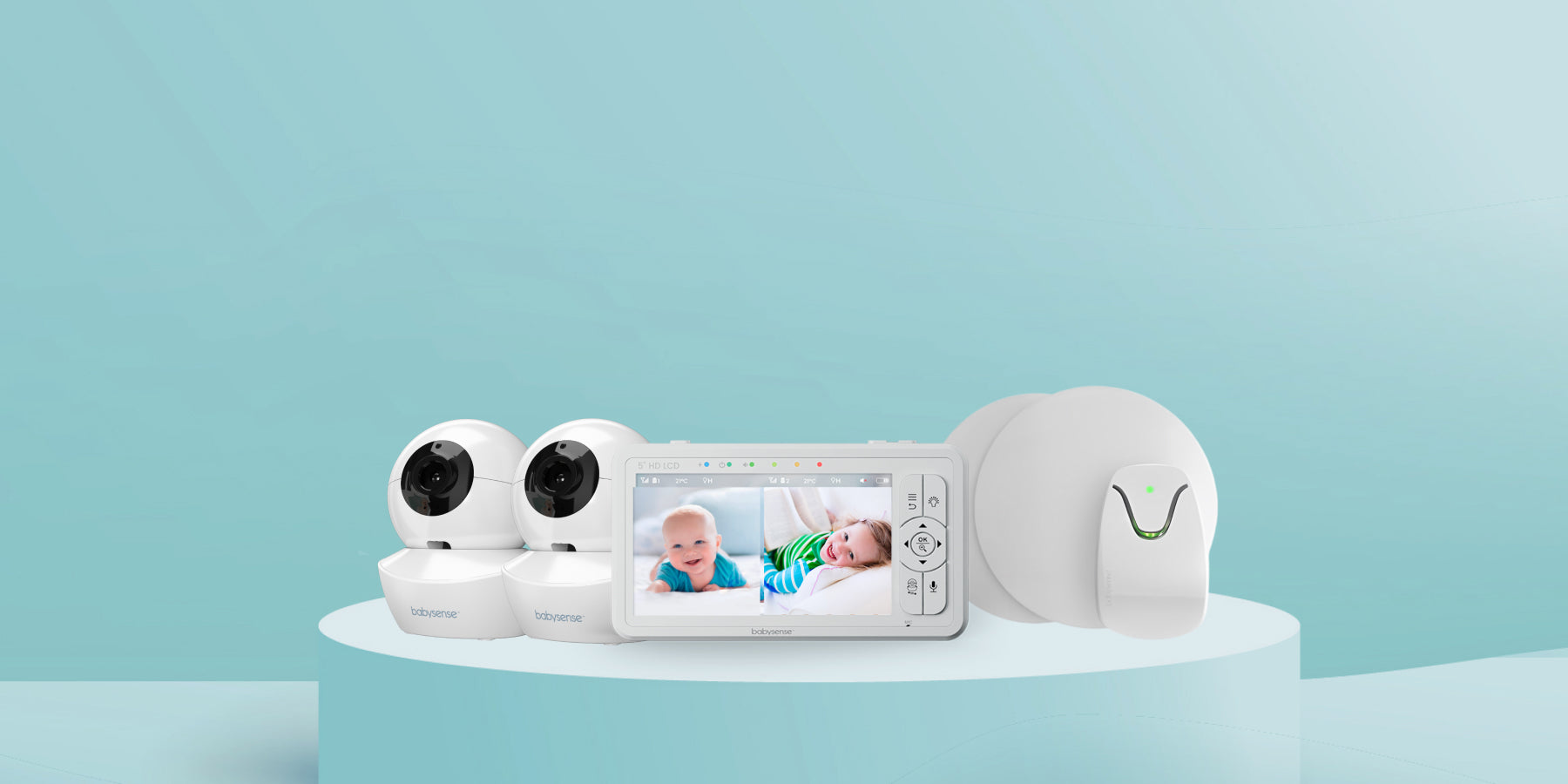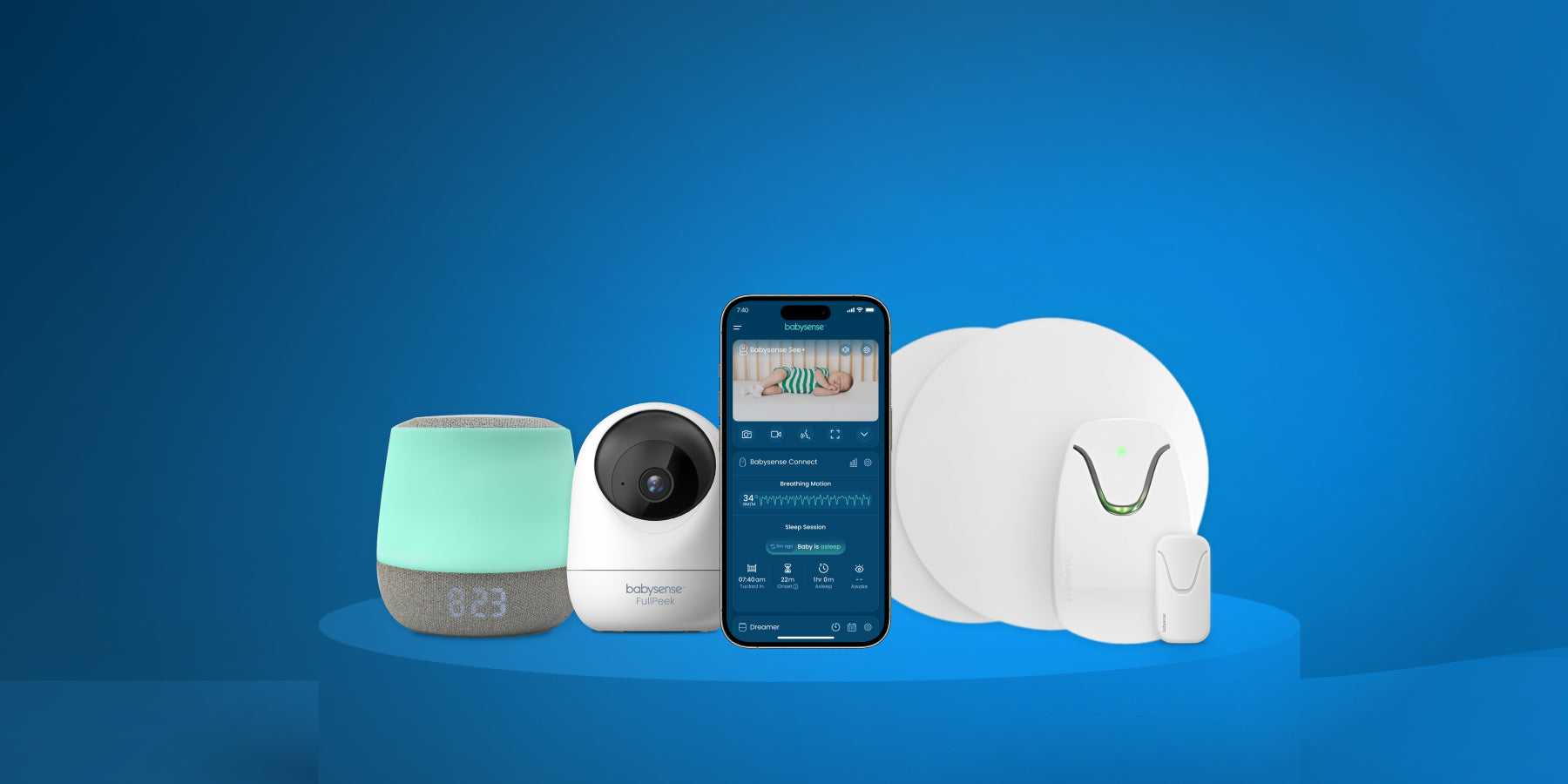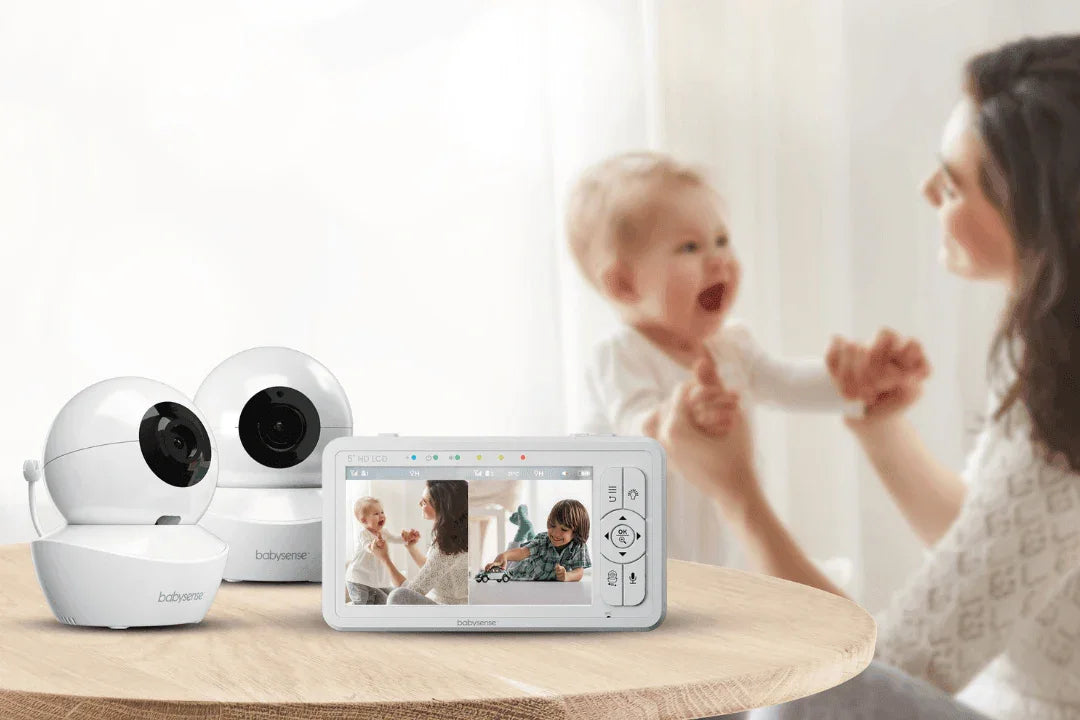While infants may not complain much about sleeping in the dark, many parents choose to put a night light in their nurseries, so they’re not navigating in the dark during those late night feeding times.
However, the color of your light can play a large role in how well your baby sleeps, and it can mean the difference between a restful night’s sleep and waking up grumpy. Here’s what you should know about what color lights can help your infant sleep better – and which ones to steer clear of.
What Colors Help Babies Sleep?
While there’s still research being done, studies have shown that red, amber, and other warm colors don’t negatively affect sleep quality or melatonin production in babies or adults.
For your baby, keeping a dim red light will be just as good as sleeping in pitch darkness – but it still provides new parents with enough visibility that they’re not tripping over toys or furniture.
What Colors Don’t Help Babies Sleep?
While warm colors, like red or orange, shouldn’t negatively impact your baby’s sleep, there are a couple of colors that can. Colors that have shorter wavelengths, like blue, white, and even green, can drastically reduce the production of melatonin in our bodies.
Melatonin is a hormone produced by the body when it’s time to go to sleep, and it can keep your baby’s circadian rhythm on the right track.
Bright blue or white lights trick your baby’s body into thinking it’s daytime, which means they may have a harder time falling asleep (and staying asleep). Keep in mind that blue and white lights aren’t just disruptive as night lights. If they’re in the same room, lights from a smartphone, tablet, or TV can also impact how your infant sleeps.
Do’s and Don’ts for Baby Night Lights
Getting a red night light may be the first step to keeping your baby’s sleep on track, but here are some other things you can do (and avoid) to make sure your infant is sleeping soundly through the night.
The Do’s
When it comes to baby night lights, here’s are the “do’s” you don’t want to overlook:
Do Keep the Night Light Dim
Although red and warm lights don’t impact melatonin production, that doesn’t mean you need a night light bright enough to light up the entire house. Try to keep your light dim and low wattage if you can – for night lights, anything between four to seven watts is usually sufficient but won’t become a nuisance.
Do Try a Night Light if Your Baby Has Nighttime Fears
While infants may be fine with sleeping in the dark, babies and toddlers can sometimes develop separation anxiety or nighttime fears as they age. If you find that two-year-old is suddenly afraid of the dark or the monsters that may be lurking there, a dim night light can provide the reassurance they need to sleep peacefully through the night.
Do Be Mindful About Where You Place the Night Light
Nobody likes to sleep with a bright light right near their head – and that includes babies. When they’re still infants, the night light is usually more for the parent’s convenience than the child’s. Make sure you’re putting the night light in a place that lights up your path into the room – like near the entrance or areas of the nursery you know you’re going to need to use.
Even camouflaging the night light behind a table or piece of furniture can still light up the room, but keep the night light away from your baby’s direct line of sight.
The Don’ts
Just like there are night light “do’s,” there are also plenty of “don’ts” too:
Don’t Assume You’ll Need a Night Light Immediately
With newborn babies, some parents may immediately assume they need a night light – either to make things more convenient for them or for the baby’s comfort. Depending on the infant, this isn’t always the case.
Some babies may be more sensitive to light than others, and having any kind of night light – even if it’s red – could make it harder for them to fall asleep.
As a parent, you may not even need the light either. If you’re worried that your infant may get too distracted, you can always crack the nursery door and leave a hall light on to achieve the same effect.
Don’t Leave a TV in Your Nursery
In some cases, parents may put a TV screen in their nursery so the baby can watch cartoons or other age-appropriate material. Although this may be fine during the daytime, it’s important not to leave the TV on right before bed – or avoid putting a television in the nursery altogether.
When they’re turned on, most TVs emit that blue-white light that tricks a baby’s brain into thinking it’s daytime. Keeping the TV on while they fall asleep or even within an hour before bedtime is sure to disrupt their sleep.
Don’t Try Night Lights With Too Many Features
When you’re shopping for night lights, you’ll encounter a wide variety of products – from simple night lights that just plug into the wall to complicated gadgets that play lullabies and project moving patterns onto the ceiling.
While some of these fancy gadgets may look appealing, you may want to first opt for a simple night light. Playing music could cause restlessness at night, while moving patterns could distract your infant from falling asleep, especially if they’re already sensitive to new sounds and sights.
If you do want a fancier night light, you may want to hold off on trying those complicated or special features right away. It’s always a good idea to make sure your baby isn’t too sensitive to the night light itself before you add other features into the mix.
You'll find a night light as a feature on our video baby monitors.
Baby Night Light FAQs
Still have questions about night lights and which colors help babies sleep? Here are some frequently asked questions that people tend to have about this topic.
What are the Benefits of a Night Light For Babies?
If you’re not sure whether you should invest in a night light or not, here are a couple of potential benefits:
- Parents may have an easier time navigating through the nursery or finding items they need with a dim night light
- Can serve as a comfort for babies or toddlers that have developed a fear of the dark or have issues with separation anxiety
Are There Different Types of Night Lights for Babies?
While they make look similar, there are different kinds of night lights you can purchase for your baby, such as:
- Soft night light: For toddlers with night fears, a soft night light could be the right pick. These lights look like stuffed animals with dim, ambient lights, and they’re meant to be placed near the crib. You can find these night lights in warmer colors, especially yellows, oranges, and reds.
- Projection: Projection night lights project an image onto your nursery wall or ceiling. While toddlers or small children might enjoy these, you’ll want to be careful that it’s not too distracting for your child.
- Plug-in: Plug-in night lights are the most common, and they just plug into your outlet. These lights also come in various colors, including warmer colors that won’t disrupt your baby’s sleep.
How Do I Know if a Night Light is Too Bright for My Baby?
Even with buying a red or yellow night light, some lights can still be too bright for babies – but how can you tell if a night light is too bright for your child?
If you find that your baby is waking up more than usual during the night (or just won’t fall asleep until much later) after you’ve given them a night light, you may want to try a few nights without it and see if there’s a difference. Or, depending on the night light, you can always try adjusting the settings so that the light is dimmer.
If your child still won’t sleep with a dimmer light, you may need to forego having a night light completely.
Final Thoughts
When it comes to picking out a night light for your child’s bedtime, there are plenty of factors at play, but one of the most important is the color of your night light. While red and warmer colors shouldn’t affect your child’s melatonin production, blue, white, and green lights can keep them up at night.
Keep in mind that there are some babies that are more sensitive to lights and colors than others. Some infants may fall asleep in a bright blue room while the dimmest red light disrupts another. With baby night lights, it’s always a good idea to start with dim, warm lights and avoid flashy gadgets with changing colors or loud lullabies.





